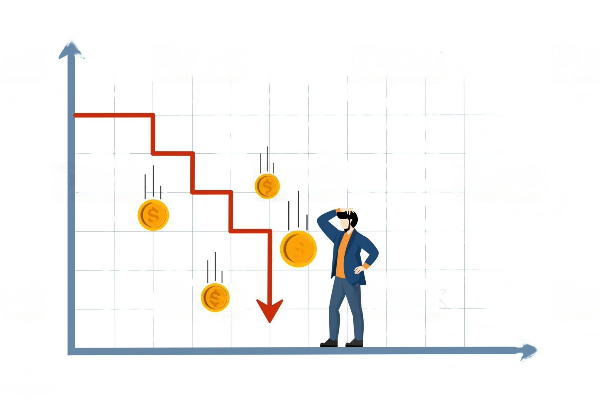Green finance is no longer just a buzzword; it’s a strategic imperative for businesses and investors alike. By directing capital toward eco-conscious projects, green finance achieves the dual mission of environmental responsibility and financial gains. In this write-up, I will explore the growth of green finance globally and in Bangladesh, showcasing why investing sustainably is not only good for the planet but also a savvy economic move.
1. The Global Upsurge in Green Finance
Globally, the sustainable debt market, which encompasses green, social, sustainability-linked, and sustainability bonds (GSS+), has exceeded USD 6 trillion by early 2025, according to Climate Bonds. In Q1 2025 alone, aligned GSS+ bond issuance hit USD 262.3 billion, marking a 7% rise from the 2021–2024 quarterly average of Climate Bonds.
The green bonds market specifically is also expanding. Valued at around USD 673 billion in 2025, it’s projected to grow to approximately USD 814 billion by 2030, registering a compound annual growth rate (CAGR) of 3.91% according to Mordor Intelligence. Sovereign issuers accounted for 32.4% of green bonds in 2024, while financial corporations are expected to lead in growth through 2030, according to Mordor Intelligence. Moreover, the Asia-Pacific region is emerging as the fastest-growing market, with a projected CAGR of 6.11% (Mordor Intelligence).
2. Financing Renewables: A Renewable Energy Boom
Renewable energy investments are surging globally. In 2022, investments hit USD 499 billion, a 16% increase from the previous year. Notably, the renewable sector saw an astounding 75% jump to about USD 200 billion in 2023, especially in solar and wind technologies (Wikipedia).
However, to hit Net Zero Emissions scenarios by 2035, clean energy investments must leap from about USD 1.9 trillion annually to USD 5.3 trillion (Wikipedia). This highlights the vast opportunity and urgency for green capital.
3. Green Finance in Bangladesh: Accelerating Progress
Bangladesh is rapidly ramping up green finance efforts. In Q1 2025, green finance disbursements by banks and NBFIs reached BDT 87.63 billion, a 21% increase over Q1 2024 (The Financial Express). Meanwhile, sustainable finance (a broader category including green projects) surged nearly 69% year-over-year to over BDT 1.49 trillion. The Financial Express.
This follows a dramatic upward trajectory: sustainable finance comprised just 8% of total loan disbursements in 2021 but climbed to nearly 40% by the end of 2024 (The Business Standard).The Daily Star. Correspondingly, green finance rose from about 3% in 2021 to over 13% in 2024 (The Business Standard).
4. Targets Driving Change: Policy and Implementation
Recognizing the urgency of climate commitments, Bangladesh Bank set clear targets: from 2025 onward, 5% of net loans must go to green finance and 40% to sustainable finance. The Business Standard The Daily Star. The 2025 targets reflect these mandates: BDT 67,820 crore for green finance and BDT 542,563 crore for sustainable finance The Business Standard.
These policy signals are paying off. In Q1 2025, green finance disbursement rose by BDT 117 crore from Q4 2024, and sustainable finance also climbed by BDT 1,703 crore, The Business Standard. Meanwhile, banks are increasingly embedding sustainability into their operations. Eastern Bank PLC, for instance, saw green lending grow from 18% of its term loans in 2023 to 35% in 2024, with nearly 90% of its portfolio now aligned with sustainable finance, according to The Business Standard.
5. Why Green Finance Makes Good Business Sense
- Growing Investor Demand & Robust Returns: Global issuance of sustainable debt continues to rise, signaling strong investor appetite and confidence. Climate Bonds.
- Falling Costs, Better Projects: Renewable technologies have become significantly more affordable, PV solar by 69%, onshore wind by 33%, and offshore wind by 45%, boosting project viability. Wikipedia.
- Policy Incentives in Bangladesh: Tax holidays, refinance schemes, and guidelines (like the Environment-Friendly Refinance Scheme and Green Transformation Fund) make sustainable projects more financially appealing. The Daily Star, RSIS International, and Wikipedia.
- Reputation & Risk Management: Sustainable projects often exhibit lower default rates and enhance brand equity, as seen with LEED-certified green factories and energy-efficient investments in Bangladesh (The Daily Star).
6. How to Incorporate Green Finance Into Your Strategy
- For Investors: Consider allocating capital toward green or sustainability-linked bonds and funds. With global GSS+ debt issuance rising, the opportunity for returns with purpose has never been clearer for Climate Bonds.
- For Banks & Lenders: Establish or strengthen Sustainable Finance Units, set targets aligned with central bank directives, and offer green refinancing schemes to attract eco-minded clients.
- For Businesses: Explore green loans or sustainability-linked finance to fund renewable installations, energy upgrades, or certifications. Renewable energy investments benefit from falling cost curves and policy incentives. Wikipedia+1.
- For Policymakers & Advocates: Promote transparency in ESG reporting, expand green funding mechanisms (like green sukuk or government bond programs), and maintain stable, long-term policy frameworks to attract responsible investment. Wikipedia/Reuters.
Green finance embodies the future of investing, balancing sustainability with profitability. Globally, we’re witnessing record-breaking sustainable bond issuances and renewable energy funding. In Bangladesh, regulatory momentum and tangible results are creating a thriving green finance ecosystem.
Investors and institutions that embrace this shift now will not only help the environment but also unlock new opportunities for growth. Let’s invest smarter for people, the planet, and profit.

